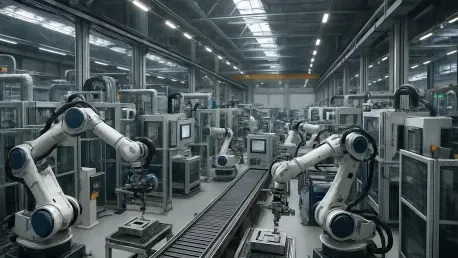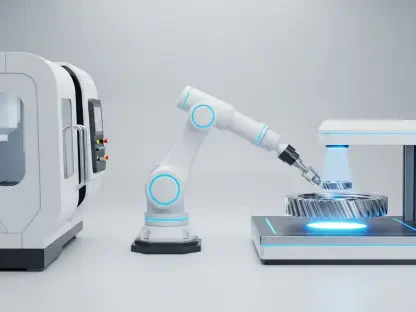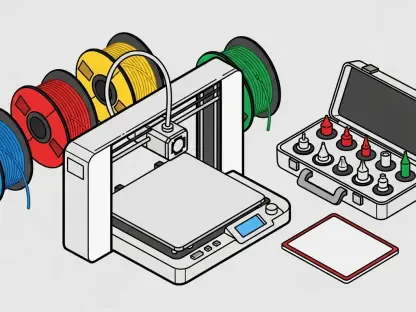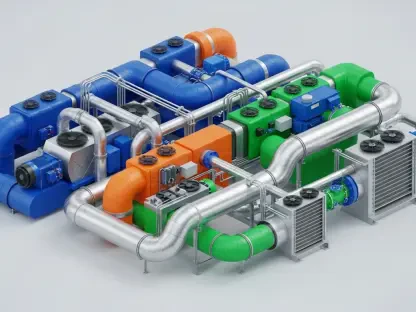In recent years, the concept of smart factories has revolutionized the manufacturing industry in Japan, underscoring a significant shift toward more technologically advanced production processes. By integrating cutting-edge technologies such as the Internet of Things (IoT), artificial intelligence (AI), and advanced robotics, smart factories aim to enhance both productivity and operational efficiency. This transformation aligns with the vision of Industry 4.0, a movement that initially gained traction in Germany and has since spread globally. As Japan finds itself at the crossroads of tradition and innovation, the nation has been steadily adapting and developing its roadmaps to keep pace with these technological advancements. However, progress in establishing smart factories is not without its challenges, as various technological, managerial, and logistical hurdles continue to impede widespread implementation. The need for a strategic approach, coupled with robust management commitment, is critical for Japan to realize the full potential of smart manufacturing and maintain its competitive edge on the world stage.
Evolution of Smart Factories in Japan
Smart factories symbolize a pivotal point in the evolution of industrial production, representing a transition from traditional assembly lines to highly automated environments characterized by seamless data collection and analysis. By utilizing IoT, AI, and robotics, these factories can monitor processes in real time and optimize operations instantaneously. The concept of Industry 4.0, introduced in 2011, has steered Japan towards developing a bespoke strategy that melds its manufacturing prowess with technological innovation. This has led to the creation of factories that are not only more efficient but also capable of responding swiftly to market demands. Japan’s journey towards fully realizing the potential of smart factories is further marked by its emphasis on sustainability and flexibility, setting benchmarks for quality and precision that other nations strive to emulate.
Despite the promising potential, the integration of these technologies comes with its own set of difficulties. Many companies find it challenging to successfully execute a comprehensive digital transformation. Issues such as fragmented data systems, lack of skilled personnel, and resistance to change persist, posing significant barriers to the implementation of smart factory initiatives. Additionally, the gap between theoretical concepts of smart manufacturing and their practical application highlights a need for robust frameworks that support the seamless adoption of these new technologies. Achieving this requires not only technological upgrades but also a reimagining of existing processes, underscoring the demand for innovation at both operational and strategic levels.
Present Initiatives and Technologies
The Japanese manufacturing sector has been at the forefront of incorporating advanced initiatives that extend beyond the factory floor, impacting supply chain management, research and development (R&D), and broader business operations. Recent advancements include deploying articulated robots and automated guided vehicles (AGVs), which significantly enhance precision and efficiency. Moreover, digital twins have emerged as a transformative technology, enabling manufacturers to create virtual replicas of physical environments to test and optimize production layouts and workflows before implementation. These tools are part of a growing arsenal of resources aimed at improving predictive maintenance capabilities and reducing downtime.
While these technologies offer impressive capabilities, the contrasting pace of adoption across industries indicates a divergence in strategic priorities and capabilities among companies. Despite digital twins being recognized for their potential benefits, their usage remains limited. Many organizations are still in the early stages of exploring how to effectively integrate them into their operations. Another trend is the increasing focus on incorporating real-time data analytics to assist in decision-making processes, aiming for a flux-free flow of information that leads to more informed and rapid responses to manufacturing challenges as they arise. This holistic view of operations not only maximizes efficiency but also ensures consistency in quality, further cementing the credibility of Japanese products on an international scale.
Challenges and Opportunities
One of the critical challenges identified in the pursuit of successful smart factory implementation is the need for a robust and supportive management framework. Commitment from management is paramount, yet often lacking, which obstructs the advancement of smart factory initiatives. Companies that exhibit strong executive involvement tend to realize more significant progress, underscoring the importance of aligning technological investments with management priorities. Furthermore, inadequate resource allocation, constrained budgets, and limited expertise in digital technologies present substantial obstacles. These factors necessitate a strategic review of priorities and an increase in investment in the training and development of skilled personnel.
Opportunities abound for those manufacturers capable of surmounting these challenges. By establishing a cohesive vision that encompasses cross-departmental collaboration, firms can leverage collective resources to drive innovation. Companies that successfully navigate these elements stand to unlock the full potential of smart factories, leading to heightened competitiveness and sustainability. Developing a strategic roadmap addressing specific bottlenecks while capitalizing on the opportunities vested in digital innovation can position these companies as leaders in the global manufacturing arena. Concerted efforts to enhance data systems and improve resource distribution are vital for transitioning from isolated technological deployments to comprehensive, enterprise-wide strategies.
Path to Sustainable Manufacturing
The realization of fully functional smart factories entails a strategic pivot focused on efficiency, sustainability, and adaptability. Success requires rethinking traditional methodologies and embracing innovations like digital twins and advanced robotics to create agile supply chains. Sustainable practices are becoming increasingly critical as companies face pressures to reduce their environmental footprint and optimize resource utilization. Digital technologies offer significant promise in achieving these objectives by enabling more precise monitoring and management of energy consumption, material usage, and waste reduction across the manufacturing lifecycle.
In addition, aligning smart factory initiatives with sustainability goals can generate substantial long-term benefits, both economically and environmentally. As global markets continue to prioritize sustainability, Japanese manufacturers who leverage digital transformation to reduce emissions and promote eco-friendly practices will gain a competitive advantage. The integration of smart technologies must therefore be approached with a forward-thinking mindset that balances efficiency with environmental stewardship. As the landscape of manufacturing evolves, Japan is poised to lead the charge by harmonizing its rich heritage of precision engineering with groundbreaking technologies in shaping the future of production.
Strategic Vision for the Future
Smart factories represent a crucial advancement in industrial manufacturing, marking a shift from conventional assembly lines to environments enriched with automation and advanced data analysis. Utilizing the Internet of Things (IoT), artificial intelligence (AI), and robotics, these factories enable real-time process monitoring and instant operational optimization. Industry 4.0, introduced in 2011, has been pivotal for Japan, encouraging a unique blend of its manufacturing expertise with cutting-edge technology. Consequently, Japan has developed factories that not only enhance efficiency but also quickly adapt to market shifts. Their journey in smart manufacturing emphasizes sustainability and adaptability, setting high standards for quality and precision that other countries aim to achieve.
However, realizing the full potential of smart factories isn’t without hurdles. Many companies struggle with executing a full-scale digital transformation. Problems like disjointed data systems, a shortage of skilled workers, and organizational resistance present considerable challenges. Furthermore, there is often a gap between the theoretical vision of smart manufacturing and its practical application, highlighting the necessity for strong frameworks that aid the smooth integration of these technologies. Meeting these challenges involves more than just adopting new technologies; it requires rethinking existing processes and driving innovation at both operational and strategic levels.









